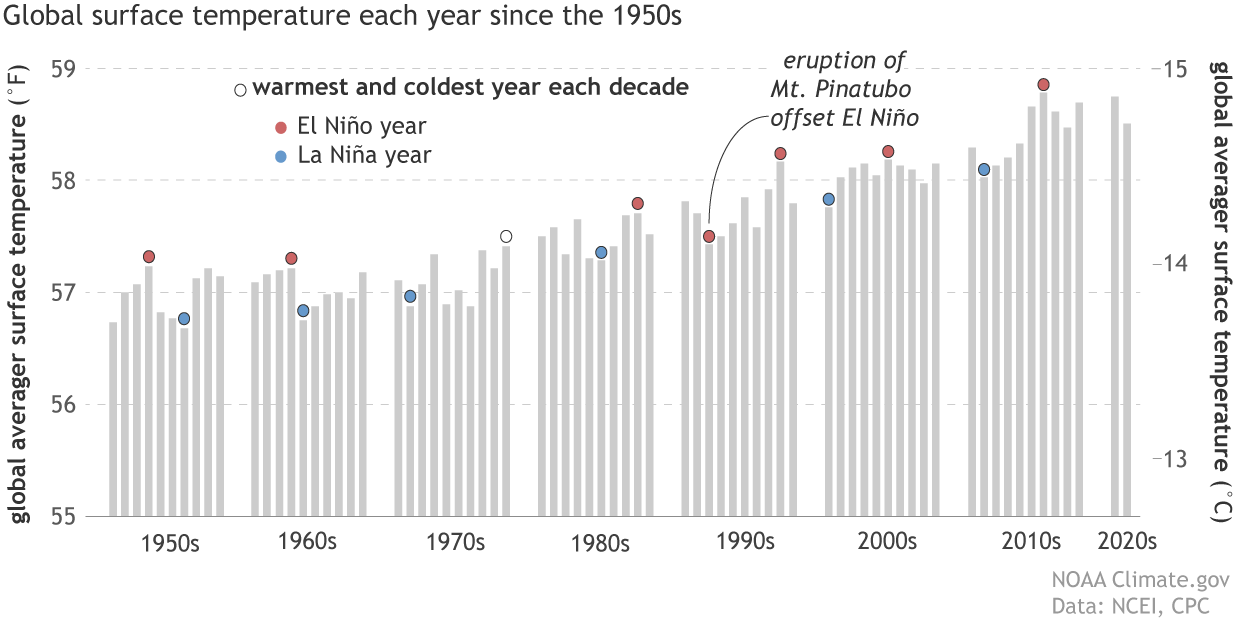El Niño: Friend or Foe?
Farmers and ag people alike all wish we had a crystal ball that could predict what the weather during our Manitoba crop season will be. A crystal ball to tell us weather to prepare for another dry season or to dust off our rubber boots and mud scrapers. As it turns out, there is one global weather phenomenon that when present, can give some confidence to the long-range forecasts’ meteorologists are casting for summer 2024.
This winter, I have been hearing the term El Niño come up fairly regularly. “The El Niño effect is what is causing this unusually warm Manitoba winter”. And in January, I sat in on a weather forecasting session (hosted by Scott Kehler, Weatherlogics President) that was explaining his prediction for the summer 2024 season based on El Niño. I was wanting to know why these events are related and how they are used to forecast what the coming months will look like (especially when week-to-week forecasts never seem to be very accurate).
To get to the bottom of it, I gave Scott Kehler a call myself. Scott told me that based on a collection of monitoring systems and statistics, he is predicting the summer of 2024 to be wetter than normal. This prediction requires a bit of background info, so hang tight.
Kehler’s presentation in January explained the phenomenon of El Niño and La Niña and how these events will consistently affect winter weather patterns in North America.
The definition of these events is fairly complex. In basic terms, they are triggered with the change in temperature of surface ocean waters in the central and eastern Pacific Ocean along the equator (see the attached photo, Image from NOAA Climate.gov). El Niño meaning above average sea surface temperatures, La Niña meaning below-average temperatures. These changes can influence the chances of extreme weather events in North America. There is no regular cycle to these events and they typically have lasting impacts for 9-12 months (quite variable). El Niño tends to happen more often than La Niña.
These phases in the Pacific Ocean trigger weather patterns that are very predictable in terms of temperature and precipitation trends in certain areas. The phases are not a guarantee of extreme weather, just that it is more likely to happen. Within a decade, the warmest and coolest years tend to coincide with El Niño or La Niña years (as seen in the chart below).
We are currently experiencing an El Niño event which has been closely following the characteristic predictions of its phase. Heat from the ocean rises into the atmosphere, leading to warmer global air temperatures. It causes a southward movement in the flow of the pacific jet stream across the southern United States (see below photo, Image from NOAA Climate.gov) which will increase the chance of rainfall and extreme weather events in southern US while allowing warmer conditions to settle in Canada during the winter. El Niño will also have some impact on summer conditions if the phase is present during summer months, but it has the most strongly correlated effects for Canadian winters.
Inversely, La Niña causes a shift in the pacific jet stream north and we see warmer/drought conditions in southern US and wetter conditions in pacific NW.
As mentioned before, these events are irregular. Several predictions centers expect El Niño to continue through the winter season but conditions likely to be shifting more neutral in April-June. The Neutral phase will show average ocean temperatures and often represents the shifting of phases. Keep in mind, it could shift from El Niño to neutral and back to El Niño. There is no specific pattern or timeline. There are many instruments and monitoring systems in the Pacific Ocean that are used to forecast the onset of the warm or cool phases.
So, knowing all of this background and that El Niño is likely to phase out by spring, I asked Scott why that means he would be predicting a wetter than normal summer? The answer was this: Historically, the summers following a strong El Niño are fairly consistently are wetter than average. Since this winter has followed the forecast for El Niño so closely, there is some confidence in the predicted effect it will follow for summer 2024.
~Katie Meggison



